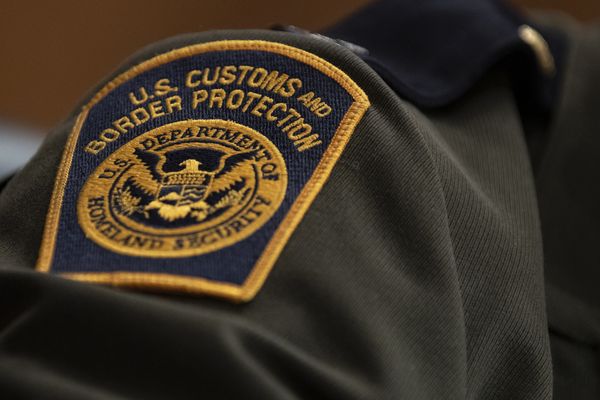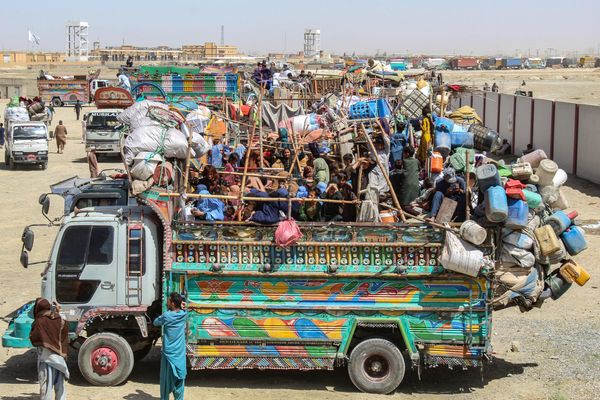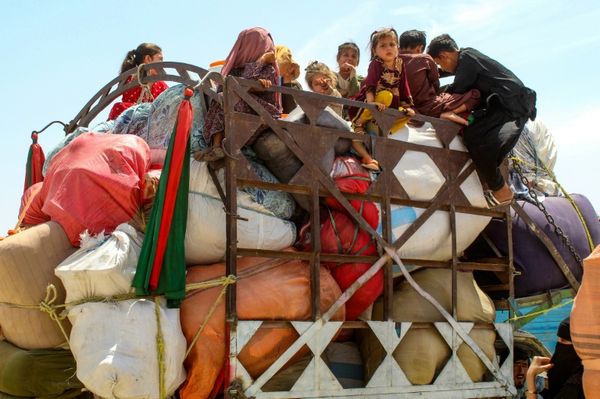
This weekend, more than a hundred demonstrators protested against a new plan by the Environmental Protection Agency (EPA) to use a local beach as a toxic waste sorting site, to process debris from the Palisades fire. They waved signs saying “Save Our Beaches” and “Sort Toxics at the Burn Site” as they walked up and down the path along Will Rogers state beach in the Pacific Palisades neighborhood, just outside Los Angeles.
Their message? Wildfire debris isn’t just ash – it’s poison. “Asbestos, heavy metals, dioxins and polycyclic aromatic hydrocarbons will not remain contained,” a petition circulated by a local resident, Ashley Oelsen, says. “Toxic contaminants from the wildfire debris could leach into the soil and the waterways. Onshore winds will undoubtedly carry these hazardous particulates, compromising the air quality where people live, work and play. The risk to our ocean’s health is just as alarming.”
The celebrated stretch of beach isn’t the only place where a post-fire debris debate is brewing. With more than 6,800 structures destroyed in the Palisades fire – and another 9,400 in the Eaton fire across the city – there are tons of ash and debris – including burned-out cars, propane tanks, pool chemicals, paint and insulation with asbestos – that need to be cleaned up and removed. Winds and rain can carry bits of toxic material into other sensitive areas, so there is a rush to move quickly. The army corps of engineers estimates 4,250,000 tons of structural ash and debris need to be removed after the LA fires of 2025.
The EPA has planned to clean up hazardous materials in just a month – a timeframe it announced in late January, after Donald Trump visited the area. The size of the disaster makes that timeframe challenging – after the devastating fires in Lahaina, Maui, it took the EPA more than three months to remove hazardous materials from just 1,448 properties that burned.
On a precious segment of California coastline, there are few places where the debris can be sorted. Right now, the Palisades cleanup is focusing on phase 1: the removal of hazardous material. For that, the EPA has deployed more than 1,000 people to remove, sort, consolidate and truck away any hazardous items. Officials say the staging sites need to be at least five acres large, and preferably paved, so that trucks can enter and exit, and they can lay down large plastic sheets and fencing to contain dust.
“In a situation like this, unfortunately, there are no good answers, and there isn’t really a ‘better place’. There’s just the least worst option,” says Annelisa Moe, associate director of science and policy, water quality, at the non-profit organization Heal the Bay in nearby Santa Monica.
In Malibu, citizens objected to the EPA’s proposal to use a parking lot near the city’s Civic Center as a temporary storage place for hazardous materials. “I do resent comparing this to, like, cleaning out some old, like, Drano,” Jeremy Fink, a Malibu resident, said at a 5 February city council meeting. “This is not fucking Drano.”
Other residents pointed out the site was located only half a mile from two elementary schools, a quarter of a mile from the Santa Monica College’s Malibu campus and one mile from Pepperdine University. An EPA official has estimated this is the largest lithium-ion battery cleanup in the world. Batteries can give off toxic gases and leach chemicals – and can also ignite new fires.
Complicating matters further, the federal government has said it will not test the soil under properties burned in the fires, despite longstanding procedure – a decision first reported by the Los Angeles Times that came as a surprise to LA county officials.
Following almost every major fire in the past 20 years, after removing ash, rubble and up to 6in of soil, agencies have sought sampling to ensure the next layer of soil is safe. This time, the army corps of engineers says the process hasn’t been authorized, and that simply removing 6in of topsoil is adequate, sparking concern from experts. After the Camp fire in 2018, lead and arsenic remained at a third of properties even after the topsoil had been removed. “We’re going to sit down and talk about this, because this is a concern,” Kathryn Barger, chair of the county board of supervisors, told the Times.
Meanwhile, work has begun to sort and remove debris around the burn areas of the Palisades. At Topanga Beach, workers are handling lithium ion batteries from cars that have been burned, de-energizing them and sorting them for recycling, Moe says. Hazardous materials must be transported to permitted facilities out of state.
Heal the Bay has opposed the EPA’s selection of Topanga beach as a site, due to its proximity to both the ocean, including a much-loved surf break, and streams that come down the canyon. “Topanga Lagoon is one of the last coastal wetland areas that exists, and so the protection of that area is incredibly important for us,” says Moe. “It’s also been a site getting ready for restoration work for the last 15 years.” That work now will have to change substantially.
The EPA says the site is “highly controlled” and the agency is minimizing risk by wetting down any dust and sampling the area before and after its work. Moe still has concerns: “This is an unprecedented situation, and you never know what could happen.”
Ash can get lifted into the air again by high winds, says Joost de Gouw, an atmospheric chemist at the University of Colorado who studied the aftermath of the 2021 Marshall Fire in Boulder. “The biggest concerns are metals and asbestos, which have been associated with various health issues,” he says.
The second phase of the cleanup includes removing what’s left around burnt buildings, including chimneys, hazardous trees, ash and up to six inches of soil. Materials deemed non-hazardous are already being transported to local landfills, which include Sunshine Canyon, the county’s largest active landfill. Some nearby residents worry that the fast pace of the cleanup means the lines are becoming blurred between what is hazardous and what is not.
The county has said that landfills that accept ash have a liner system that prevents any contaminants from leaking into local groundwater.
Recent rains have continued to bring ash and other runoff into the Santa Monica bay. Heal the Bay has been testing the ocean water off the coast of burned areas, both before the rains and after. The group collected samples and tested for levels of bacteria and turbidity – a measure of how cloudy the water is with suspended particles. They also tested for chemicals like Pfas – found in firefighting foam – as well as PCBs, benzene and metals such as mercury.
Moe says the results aren’t back yet; runoff from the fire zone contains toxic substances for the ocean, but their concentrations are as yet unknown. It’s a similar situation on land. When the scientists tested the turbidity of the creek after it rained, their devices went to the maximum setting, with water that looked like milky fluid. The water isn’t used for drinking, but it plays an important role in the ecosystem, giving home to endangered steelhead trout, as well as dozens of amphibian and reptile species. “We know there are particles in the water – not necessarily what those particles are,” Moe notes.
Still, Federal Emergency Management Agency officials who presented at the Malibu city council meeting pointed out that leaving materials in place would do far greater damage than the “minimal risk of something to happen while the materials are in a plastic drum”.
Moe agrees that it’s better to clean things up as quickly as possible, and that each choice will make some people angry. “Every location is going to be important to somebody, and so that’s why there’s no good answers here,” she says. “But there are places that we can look at that, while not ideal, would be a bit easier to contain.”







